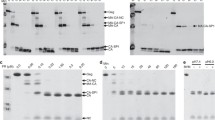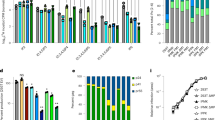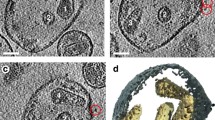Abstract
For many years it has been known that viral capsid proteins are capable of self-assembly, but increasing evidence over the past decade indicates that in cells HIV-1 capsid assembly occurs via a complex but transient series of steps requiring multiple viral–host interactions. To better understand the biochemistry of HIV assembly, our group established a cell-free system that faithfully reconstitutes HIV-1 Gag synthesis and post-translational events of capsid assembly using cellular extracts, albeit more slowly and less efficiently. This system allowed initial identification of interactions that occur very transiently in cells but can be tracked in the cell-free system. Analysis of the cell-free system revealed that Gag progresses sequentially through a step-wise, energy-dependent series of assembly intermediates containing cellular proteins. One of these cellular proteins, the ATPase ABCE1, has been shown to play a critical role in the assembly process. The existence of this energy-dependent assembly pathway was subsequently confirmed in cellular systems, further validating the cell-free HIV-1 capsid assembly system as an excellent tool for identifying mechanisms underlying HIV-1 capsid formation. Here we describe how to assemble immature HIV-1 capsids in a cell-free system and separate assembly intermediates by velocity sedimentation.
Access this chapter
Tax calculation will be finalised at checkout
Purchases are for personal use only
Similar content being viewed by others
References
Briggs J. A., Simon M. N., Gross I, et al. (2004) The stoichiometry of Gag protein in HIV–1. Nat Struct Mol Biol 11, 672–675.
Bryant M., Ratner L. (1990) Myristoylation-dependent replication and assembly of human immunodeficiency virus 1. Proc Natl Acad Sci USA 87, 523–527.
Gheysen D., Jacobs E., de Foresta F., et al. (1989) Assembly and release of HIV-1 precursor Pr55gag virus–like particles from recombinant baculovirus – infected insect cells. Cell 59, 103–112.
Gottlinger H. G., Sodroski J. G., Haseltine W. A. (1989) Role of capsid precursor processing and myristoylation in morphogenesis and infectivity of human immunodeficiency virus type 1. Proc Natl Acad Sci USA 86, 5781–5785.
Klein K., Reed J. C., Lingappa J. R. (2007) Intracellular destinies: degradation, targeting, assembly, and endocytosis of HIV Gag. AIDS Rev 9, 150–161.
Campbell S., Rein A. (1999) In vitro assembly properties of human immunodeficiency virus type 1 Gag protein lacking the p6 domain. J Virol 73, 2270–2279.
Lingappa J. R., Hill R. L., Wong M. L., et al. 1997) A multistep, ATP-dependent pathway for assembly of human immunodeficiency virus capsids in a cell – free system. J Cell Biol 136, 567–581.
Zimmerman C., Klein K. C., Kiser P. K., et al. (2002) Identification of a host protein essential for assembly of immature HIV-1 capsids. Nature 415, 88–92.
Dooher J. E., Lingappa J. R. (2004) Conservation of a step-wise, energy-sensitive pathway involving HP68 for assembly of primate lentiviral capsids in cells. J Virol 78, 1645–56.
Dooher J. E., Schneider B. L., Reed J. C., et al. (2007) Host ABCE1 is at plasma membrane HIV assembly sites and its dissociation from Gag is linked to subsequent events of virus production. Traffic 8, 195–211.
Lingappa J. R., Newman M. A., Klein K. C., et al. (2005) Comparing capsid assembly of primate lentiviruses and hepatitis B virus using cell-free systems. Virology 333, 114–123.
Singh A. R., Hill R. L., Lingappa J. R. (2001) Effect of mutations in Gag on assembly of immature human immunodeficiency virus type 1 capsids in a cell-free system. Virology 279, 257–270.
Dooher J. E., Lingappa J. R. (2004) Cell-free capsid assembly of primate lentiviruses from three different lineages. J Med Primatol 33, 272–280.
Lingappa J. R., Martin R. L., Wong M. L., et al. (1994) A eukaryotic cytosolic chaperonin is associated with a high molecular weight intermediate in the assembly of hepatitis B virus capsid, a multimeric particle. J Cell Biol 125, 99–111.
Klein K. C., Dellos S. R., Lingappa J. R. (2005) Identification of residues in the hepatitis C virus core protein that are critical for capsid assembly in a cell-free system. J Virol 79, 6814–6826.
Klein K. C., Polyak S. J., Lingappa J. R. (2004) Unique features of Hepatitis C Virus capsid formation revealed by de novo cell-free assembly. J Virol 78, 9257–9269.
Erickson A. H., Blobel G. (1983) Cell-free translation of messenger RNA in a wheat germ system. Methods Enzymol 96, 38–50.
Melton D. A., Krieg P. A., Rebagliati M. R., et al. (1984) Efficient in vitro synthesis of biologically active RNA and RNA hybridization probes from plasmids containing a bacteriophage SP6 promoter. Nucleic Acids Res 12, 7035–7056.
Spearman P., Ratner L. (1996) Human immunodeficiency virus type 1 capsid formation in reticulocyte lysates. J Virol 70, 8187–8194.
Author information
Authors and Affiliations
Editor information
Editors and Affiliations
Rights and permissions
Copyright information
© 2009 Humana Press, a part of Springer Science+Business Media, LLC
About this protocol
Cite this protocol
Lingappa, J.R., Thielen, B.K. (2009). Assembly of Immature HIV-1 Capsids Using a Cell-Free System. In: Prasad, V.R., Kalpana, G.V. (eds) HIV Protocols. Methods In Molecular Biology™, vol 485. Humana Press. https://doi.org/10.1007/978-1-59745-170-3_13
Download citation
DOI: https://doi.org/10.1007/978-1-59745-170-3_13
Publisher Name: Humana Press
Print ISBN: 978-1-58829-859-1
Online ISBN: 978-1-59745-170-3
eBook Packages: Springer Protocols




